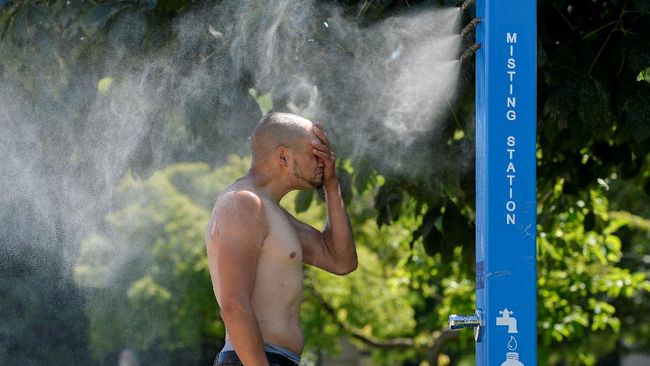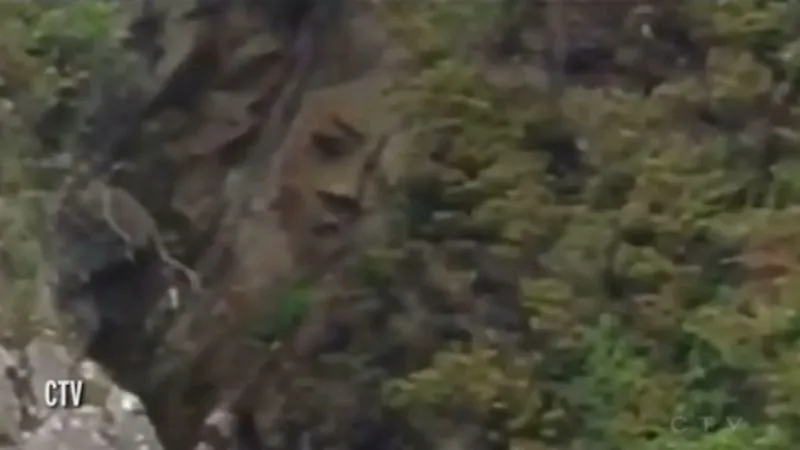An unprecedented wildfire season continues to rage across Canada, where a second firefighter has died battling the blaze.
Cities across North America braced for more smoke on Monday as Canada’s 883 active fires burn, 15 of which are recent. At least 580 of the fires are deemed out of control.
Overall, about 10 million hectares (24.7 million acres) have burned in Canada in 2024 so far, eclipsing the previous record of about 7.1 million hectares (17.5 million acres) in 1995.
Here is the latest news on the fires in Canada:
The firefighter is dead
Canadian officials have confirmed that a firefighter died on Saturday after battling a blaze near his community in the Northwest Territories.
“I am deeply saddened by the news from the Northwest Territories that another firefighter has lost his life fighting the wildfires,” Prime Minister Justin Trudeau tweeted on Sunday.
Officials said the firefighter was from Fort Liard, but his identity was not immediately released. There were 89 active fires in the Northwest region on Monday.
Saturday’s death was the second after another firefighter, identified as Devyn Gale, 19, died after a tree fell on him in British Columbia on Thursday. Broken limbs and fallen trees pose such a high risk to firefighters that they are sometimes called the nickname “widowmaker”.
The Canadian Armed Forces and the Canadian Coast Guard have been activated to support the nation’s firefighting efforts.
South Africa, Australia, the United States, Mexico, New Zealand, France, Spain and Portugal have also mobilized resources to help contain the fires.
High temperatures sparked record fire season
British Columbia, on Canada’s west coast, is currently experiencing the highest number of individual fires of any region, with 373 active fires Monday, followed by Quebec on the east coast with 108, according to the Interagency Fire Center of Canadian forest.
The fires broke out as Canada also experienced record high temperatures.
On July 8, Fort Good Hope in the Northwest Territories reached 17.32 degrees Celsius (63 degrees Fahrenheit), the highest temperature on record.
It comes as the world experiences record heat, with scientists saying 2023 could be the hottest year on record.
High temperatures can dry out vegetation, creating more fuel for fires, experts say.
Smog affects air quality in the United States
Smoke from the fires also affected air quality in Canada and the United States, blanketing major cities in the Midwest and Northeast regions of the United States from June.
The US Environmental Protection Agency (EPA) issued another air quality warning for the state stretching from Montana to Ohio on Sunday as pollution mixed with weather regional.
“Air quality warning in effect over most of the Great Lakes, Midwest and Northern Highlands,” the US National Weather Service said. “This is due to the high concentration of smoke from Canadian wildfires in this area.”
New York Governor Kathy Hochul announced that an air quality alert will be reissued Monday for upstate and western New York due to wildfires.
The EPA’s interactive air quality map showed stretches of “unhealthy” air in Montana, South Dakota, Wyoming, Illinois, Kentucky and Ohio on Monday.
Authorities are advising residents, especially those in vulnerable groups, to take precautions such as wearing masks, staying indoors and keeping indoor air clean to keep it safe.
Is climate change to blame?
Experts have warned that extreme weather caused by climate change will likely make wildfires even more devastating.
Climate change is warming the Arctic, Mohammad Reza Alizadeh, a climate researcher at the Massachusetts Institute of Technology and McGill University in Quebec, told the Chicago Tribune. This, in turn, could alter weather patterns in Canada, one of eight countries located within the Arctic Circle.
Rising temperatures over the Arctic are slowing the jet stream of strong winds in the upper atmosphere. With less jet stream movement, drought can persist in some areas for a longer period, as can rainfall, Alizadeh said.
This sets up a cycle where heavy rains create more vegetation, creating combustible firewood during prolonged droughts.
“Climate change is expected to lead to an increase in the number of very hot and dry days across the country,” Alizadeh said.
“And that means our forests are likely to become more flammable in many areas.”

“Travel nerd. Social media evangelist. Zombie junkie. Total creator. Avid webaholic. Friend of animals everywhere. Future teen idol.”


:strip_icc():format(jpeg)/kly-media-production/medias/3387188/original/007486800_1614303448-banner__1_.jpg)



